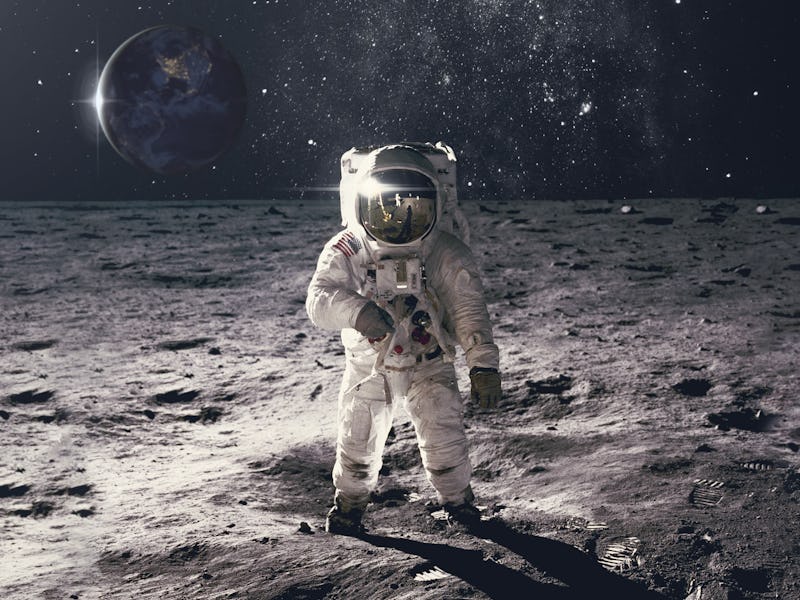NASA and Blue Origin are using robot eyes to solve a major moon problem
Blue Origin's New Shepard rocket will trial the technologies NASA wants to use for Artemis missions.

NASA and Blue Origin are teaming up to test a robotic system that could help astronauts land on the moon.
Last week, the US space agency shared news that it will work with the private space company founded by Amazon chief Jeff Bezos to test technologies that could solve one of the biggest problems on the moon for humans — safely landing on it.
It's all part of the Safe and Precise Landing – Integrated Capabilities Evolution project, also known as SPLICE.
The objective is to make it much easier to avoid obstacles as a spacecraft is preparing to land, using a combination of lasers, cameras, computers, and algorithms to "give spacecraft the artificial eyes and analytical capability" to land safely.
On Twitter last week, the Blue Origin account shared that there are some "very cool flight tests coming," using the New Shepard rocket to these systems. The firm is set to play a big role in NASA's lunar plans: beyond testing SPLICE, the firm developing a human landing system for the Artemis project that will return NASA astronauts to the moon in 2024.
If successful, SPLICE could aid in solving one of the toughest challenges in space exploration. It's a struggle that NASA astronaut Neil Armstrong faced on the history-making crewed mission to the moon. GeekWire describes how, during the 1969 mission, Armstrong had to ease the controls in a split-second decision to avoid the rocks and debris on the lunar surface.
It's an issue the next generation of NASA astronauts would face on their trip to the moon if it weren't for the advances in technology over the past five decades. SPLICE will help spacecraft find their way to a safe spot within the designated landing ellipse, a circle that has gradually grown smaller as precision has improved.
“What we’re building is a complete descent and landing system that will work for future Artemis missions to the Moon and can be adapted for Mars,” project manager Ron Sostaric said in a statement. “Our job is to put the individual components together and make sure that it works as a functioning system.”
Blue Origin's New Shepard.
SPLICE has four main components:
1 – Terrain relative navigation – This helps the craft work out where it is. The system uses an onboard camera to take 10 pictures every second. The system quickly compares this to its own stored satellite images to quickly match pictures to the correct location. This is done in quick succession until the craft is four miles above the surface.
2 – A navigation Doppler lidar – This sensor is similar to the one used with self-driving cars. A laser beam is sent out from the unit and bounces off an object. The system times how long it takes for the light to return, and uses that to calculate the object's distance. This specific kind of lidar being used here has been designed specifically with landing missions in mind.
With this instrument, NASA is using three laser beams aimed at the ground. This is used to understand how far the craft has left before it reaches the ground, and also shows the craft's speed and direction. The system makes these calculations 20 times per second.
3 – A descent and landing computer – This is used to calculate all the data coming in from each component. A separate computer is used to avoid overloading the main computer. The design being tested by Blue Origin is a stop-gap: data from the tests will be used to help ultimately design its successor.
4 – A hazard detection lidar – Unlike the other three components, this fourth sensor will be tested in a future mission with both flight and ground tests.
NASA is expected to send the first woman and the next man to the moon in 2024. While it will be the first time in more than five decades that humans have stepped foot on the moon, it should hopefully require less of the lightning-fast reflexes that Armstrong displayed on the first visit.
This article was originally published on